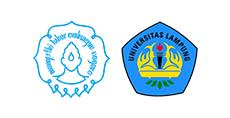Blended Learning with Flipped Classroom Strategy : The Effect to the Independence and Learning Outcomes
Abstract
In terms of goal planning, procedures, and evaluation of learning results, learning independence refers to an individual's willingness to study on his own initiative, with or without the assistance of others. The flipped classroom is one learning style that can be utilized to improve student independence. This study aims to determine (1) whether there are differences in independence in the application of the Blended Learning strategy Flipped Classroom with the conventional learning model; (2) Are there differences in student learning outcomes in the application of the Blended Learning strategy Flipped Classroom with the conventional learning model (3) Is there an increase in independence in the application of the Blended Learning strategy Flipped Classroom with the conventional learning model; (4) Is there an increase in student learning outcomes in the application of the Blended Learning strategy Flipped Classroom with the conventional learning model. The pretest-posttest control group design model was applied in this study, which used the quasi experimental design method. The participants in this study are students from SMK Negeri 1 Gondang's classes X Multimedia 1 and X Multimedia 2. A total of 70 pupils were used in the study. Total sampling was employed as the sampling method. Pretests, posttests, and questionnaires are used to collect data. Balance tests, normality testing, homogeneity tests, and hypothesis tests are among the data analysis procedures employed. The findings revealed that the Blended Learning learning model combined with the flipped classroom method had an impact on student independence and learning outcomes.
Full Text:
PDFReferences
A. Mudlofir and E. F. Rusdiyah, Desain Pembelajaran Inovati: Dari Teori ke Praktik, 2 ed., Jakarta: Rajawali Press, 2017.
OECD. 2019. PISA 2018 Assessment and Analytical Framework PISA. Paris: OECD Publishing.
Hidayat, D. R., Rohaya, A., Nadine, F., Ramadhan, H., Rawamangun, J., Raya, M., … Timur, K. J. (2020). KEMANDIRIAN BELAJAR PESERTA DIDIK DALAM PEMBELAJARAN DARING PADA MASA PANDEMI COVID -19 Program Studi Bimbingan dan Konseling , Universitas Negeri Jakarta SELF-REGULATED LEARNING OF STUDENTS STUDYING ONLINE. 34(2), 147–154.
Kameswari, Dita. (2019). PENGARUH KEMANDIRIAN BELAJAR, MINAT BACA DAN KECERDASAN NATURALIS TERHADAP PRESTASI BELAJAR BIOLOGI. BRILIANT: Jurnal Riset dan Konseptual Volume 4 Nomor 2
Kurniawan, B., Wiharna, O., Permana, T. (2017). STUDI ANALISIS FAKTOR-FAKTOR YANG MEMPENGARUHI HASIL BELAJAR PADA MATA PELAJARAN TEKNIK LISTRIK DASAR OTOMOTIF. Journal of Mechanical Engineering Education. 4(2).
Menteri Pendidikan. (2020). Surat Edaran Nomor 3 Tahun 2020 Tentang Pelaksanaan Pendidikan dalam Masa Darurat CoronaVirus (COVID-19).
Mirlanda, E. P., Nindiasari, H., Sultan, U., & Tirtayasa, A. (2019). PENGARUH PEMBELAJARAN FLIPPED CLASSROOM TERHADAP. 4, 38–49.
Pebriyanti, S., Wena, M., & Payadnya, A. (2020). PERBEDAAN HASIL BELAJAR MATEMATIKA SISWA YANG DIAJAR DENGAN STRATEGI PEMBELAJARAN FLIPPED CLASSROOM DAN KONVENSIONAL. Mahasaraswati Seminar Nasional Pendidikan Matematika (MAHASENDIKA), 15–25.
Putri, N. (2019). Pengaruh model project based learning terintegrasi STEM terhadap kemampuan pemecahan masalah fisika siswa pada konsep fluida dinamis. (Skripsi Online). Tersedia pada: http://repository.uinjkt.ac.id/. Diakses pada 18 Juli 2021.
Rahmah, & Ikashaum, F. (2021). Pembelajaran Matematika Dengan Model Flipped Classroom di Era Pandemik Covid-19. Journal of Mathematics Education, 2, 75–82.
Rahmelina at al (2019). The Effectiveness of the Flipped Classroom Model Using E-learning Media in Introduction to Information Technology Course. International Journal of Emerging Technologies in Learning (iJET) 14(21):148
Rohman, A., Ningsih, Y. E., Sejarah, M. P., Surakarta, U., Surakarta, K., & Nasional, I. (2018). PENDIDIKAN MULTIKULTURAL : PENGUATAN IDENTITAS NASIONAL DI ERA. (September), 44–50.
Serdar, F., Ministry, Y., & Education, N. (2016). Flipped classroom model in education. 2–8.
Refbacks
- There are currently no refbacks.






